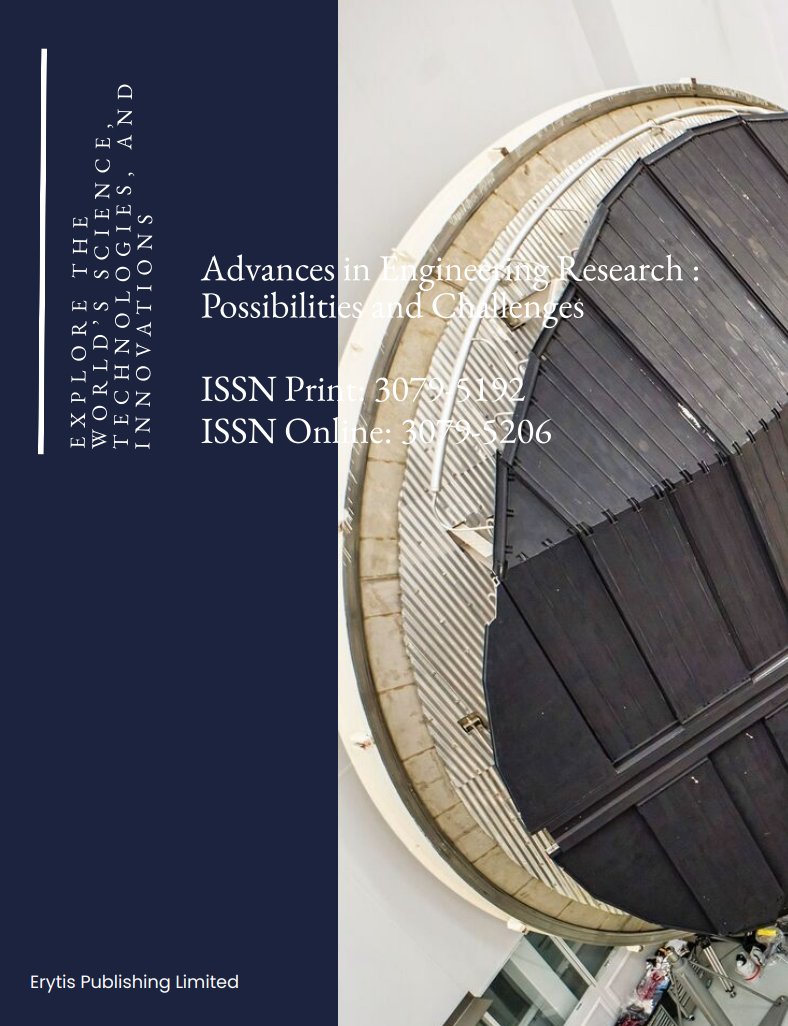Scientometric Analysis of Urban Resilience Re-search: 2005–2023
DOI:
https://doi.org/10.63313/AERpc.9035Keywords:
Scientometric Analysis, Urban Resilience, CiteSpaceAbstract
Urban resilience has emerged as a critical concept in the face of rapid urbaniza-tion and increasingly complex risks in cities. While urban resilience research has gained significant momentum in recent years, its foundational principles remain unclear. This paper aims to explore the evolution of urban resilience re-search over the last two decades, examining the growth trends, geographic dis-tribution, institutional contributions, and research hotspots. Using CiteSpace 6.2.R, we conduct a bibliometric analysis of 1,716 scholarly articles published between 2005 and 2023. Our findings reveal that research on urban resilience has witnessed exponential growth since 2012, particularly after the COVID-19 pandemic, signaling a shift towards interdisciplinary and context-specific ap-proaches. Geographic and institutional analysis highlights the dominant roles of China, the United States, and Western Europe, as well as leading institutions such as Arizona State University and Hiroshima University. Furthermore, key-word clustering analysis identifies key research themes including flooding, cli-mate change, urban policy, and resilience frameworks. The study concludes by identifying emerging research directions and offers insights into how urban re-silience can be further developed to tackle contemporary challenges in urban environments.
References
[1] Chen, C. (2006). CiteSpace II: Detecting and visualizing emerging trends and transient pat-terns in scientific literature. Journal of the American Society for Information Science and Technology, 57(3), 359–377. https://doi.org/10.1002/asi.20317
[2] Escorcia Hernández, J. R., Torabi Moghadam, S., Sharifi, A., & Lombardi, P. (2023). Cities in the times of COVID-19: Trends, impacts, and challenges for urban sustainability and resili-ence. Journal of Cleaner Production, 432. https://doi.org/10.1016/j.jclepro.2023.139735
[3] Huang, H., Zhou, S., Wang, W., Li, R., Qin, T., & Yu, F. (2023). Study on the evaluation method and system of urban resilience in China. Environment Systems and Decisions, 43(4), 735–745. https://doi.org/10.1007/s10669-023-09926-x
[4] Leichenko, R. (2011). Climate change and urban resilience. Current Opinion in Environ-mental Sustainability, 3(3), 164–168. https://doi.org/10.1016/j.cosust.2010.12.014
[5] Meerow, S., Newell, J. P., & Stults, M. (2016). Defining urban resilience: A review. Land-scape and Urban Planning, 147, 38–49. https://doi.org/10.1016/j.landurbplan.2015.11.011
[6] Rosenzweig, B. R., McPhillips, L., Chang, H., Cheng, C., Welty, C., Matsler, M., Iwaniec, D., & Davidson, C. I. (2018). Pluvial flood risk and opportunities for resilience. Wiley Interdisci-plinary Reviews: Water, 5(6). https://doi.org/10.1002/wat2.1302
[7] Sharifi, A. (2023). Resilience of urban social-ecological-technological systems (SETS): A review. Sustainable Cities and Society, 99. https://doi.org/10.1016/j.scs.2023.104910
[8] Vale, L. J., & Campanella, T. J. (2005). The city shall rise again: Urban resilience in the wake of disaster. IEEE Engineering Management Review, 33(3), 3–7. https://doi.org/10.1109/EMR.2005.26761
[9] Zhu, S., Li, D., & Feng, H. (2019). Is smart city resilient? Evidence from China. Sustainable Cities and Society, 50. https://doi.org/10.1016/j.scs.2019.101636
[10] Ziervogel, G., Pelling, M., Cartwright, A., Chu, E., Deshpande, T., Harris, L., Hyams, K., Kaunda, J., Klaus, B., Michael, K., Scott, D., & Zweig, P. (2017). Inserting rights and justice into urban resilience: a focus on everyday risk. Environment and Urbanization, 29(1), 123–138. https://doi.org/10.1177/0956247816686905
Downloads
Published
Issue
Section
License
Copyright (c) 2025 by author(s) and Erytis Publishing Limited.

This work is licensed under a Creative Commons Attribution 4.0 International License.















